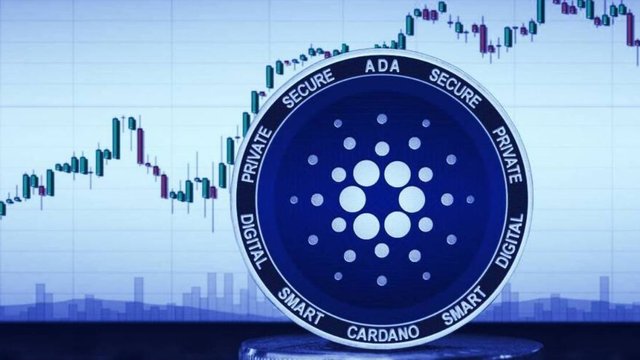What is Cardano (ADA)?

Cardano is a blockchain and smart contract platform that's using peer-reviewed research to avoid the pitfalls of its predecessors.
Cardano is a blockchain platform that's founded on peer-reviewed research.
In a milestone for the platform, it launched smart contracts on testnet in May 2021, with a mainnet launch to follow later in the year.
Cryptocurrencies currently face a number of challenges, including scalability, energy consumption, and the ability to interact with regular money.
Cardano calls itself a third-generation public blockchain. Its community is working to solve these problems and to improve on its predecessors, such as Bitcoin and Ethereum.
As of October 2021, Cardano is the fourth-biggest cryptocurrency by market capitalization.
What is Cardano?
You’ve heard of first and second-generation cryptocurrencies Bitcoin and Ethereum, right? Cardano calls itself the "first third-generation cryptocurrency." Like Ethereum, it aims to be a platform on which people can create smart contracts
It was created by a team led by Charles Hoskinson, in a bid to create a "more balanced and sustainable ecosystem" for cryptocurrencies. Originally developed as a research project, Cardano has evolved into a blockchain platform in its own right. Its creators believed that smart contract blockchains such as Ethereum face challenges around scalability and interoperability, and that those challenges can best be addressed by a new platform developed from the ground up.
Did you know?
The person most responsible for the creation of Cardano is Charles Hoskinson, who was actually one of the co-founders of Ethereum.
A brief history
📚 Cardano began in 2015 as a research project to explore how cryptocurrencies could be improved.
👨🎨 Cardano was first released to the public on September 29, 2017 with the Bryon phase, supporting only ADA transactions.
🖧 The next phase, Shelley, launched in July 2020. It improved the network’s decentralization, and meant that holders could stake ADA.
📝 The third stage, Goguen, adds support for smart contracts via the Alonzo hard fork, and native token issuance.
🗳️ The final stages are Basho, which focuses on scaling, and Voltaire, which deals with on-chain governance.
Did you know?
Cardano names its major product milestones after famous English poets. The network has finished the Byron and Shelley stage and is now in the Goguen era.
What’s so special about Cardano?
The team behind Cardano has been inspired by the world of science publishing, and has adopted its peer-reviewed approach for their cryptocurrency.
What does that mean? Well, all changes and new features introduced are developed, reviewed and agreed upon by academics before being used, including the network's consensus algorithm, Ouroboros (of which more later). The code for the network is written in the Haskell programming language, which is used by companies including Bank of America and AT&T. And IOHK, the company behind Cardano, has published a number of academic papers describing the platform and its technology.
But that's not all!
The Ethereum network currently uses the proof of work consensus mechanism to verify transactions, which uses a lot of electricity and can only process a limited number of transactions at once. Cardano uses proof of stake, which consumes less power; the network uses an algorithm called Ouroboros to choose who creates the next block and to validate blocks. (The Ethereum 2.0 upgrade will see Ethereum switch to proof of stake by as early as the end of 2021).
Proof of stake advocates believe that a staking-based consensus mechanism makes blockchain networks more secure while significantly reducing their power consumption and carbon footprint.
"If we get [proof-of-stake] right, the network will be 250 times more decentralized than Bitcoin."
Charles Hoskinson
Cardano developer IOHK has already made progress in identity management and traceability, announcing a number of partnerships; in 2019, IOHK teamed up with footwear manufacturer New Balance to tackle counterfeit sneakers, enabling customers to confirm the authenticity of products using the Cardano blockchain. In April 2021, the company partnered with the Ethiopian government for an identity solution to be rolled out in schools.
Ultra-fast transaction speeds and interoperability with other blockchains are in the works too.
Did you know?
Cardano’s coin is named ADA after Ada Lovelace, a 19th-century mathematician recognized as the first computer programmer, and daughter of the poet Lord Byron.
What else is different?
There are three parts to Cardano:
🖧 The Cardano Foundation - supports the research and development of the network.
🏫 IOHK - a company that works in conjunction with several universities on research and development.
🏢 Emurgo - a separate company contracted to work on the blockchain and make it appealing to businesses.
How is ADA produced?
Cardano’s ADA currency isn’t mined like Bitcoin. Instead of miners there are validators, which are chosen by the network depending on how much ADA currency they currently own.
If they’re selected to validate the transactions on the block, they place a bet on how confident they are on being able to verify all the transactions. If the blockchain verifies the validator’s block, they effectively win the bet and get a reward in ADA.
What is Ouroboros?
Ouroboros is Cardano’s defining algorithm, the first blockchain protocol to be based on peer-reviewed research, and the project’s solution to proof-of-stake.
Essentially, the consensus protocol sits behind Cardano's capability as a decentralized proof-of-stake platform. It’s used to secure the network, validate transactions and earn newly minted ADA.